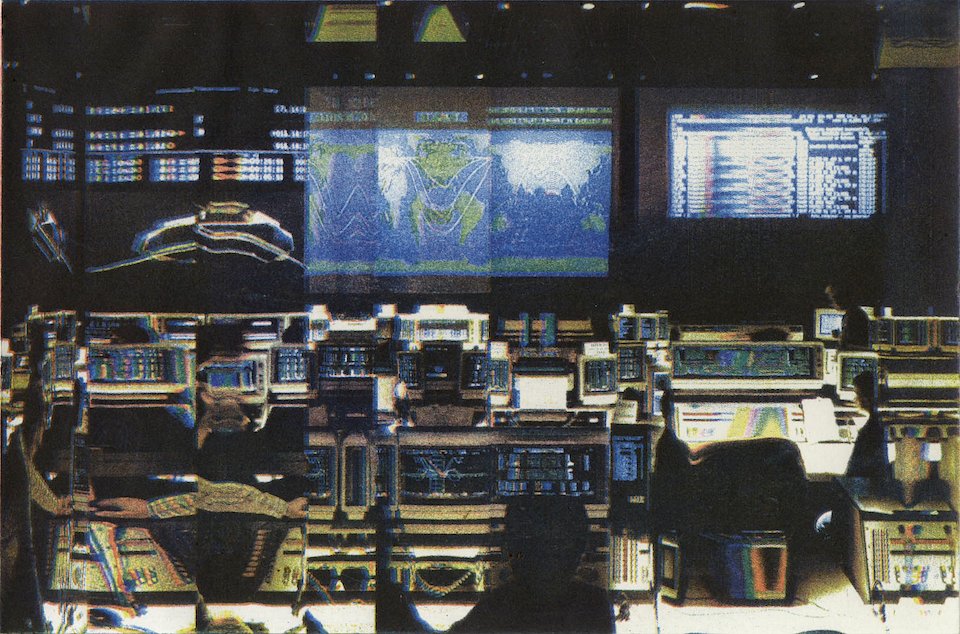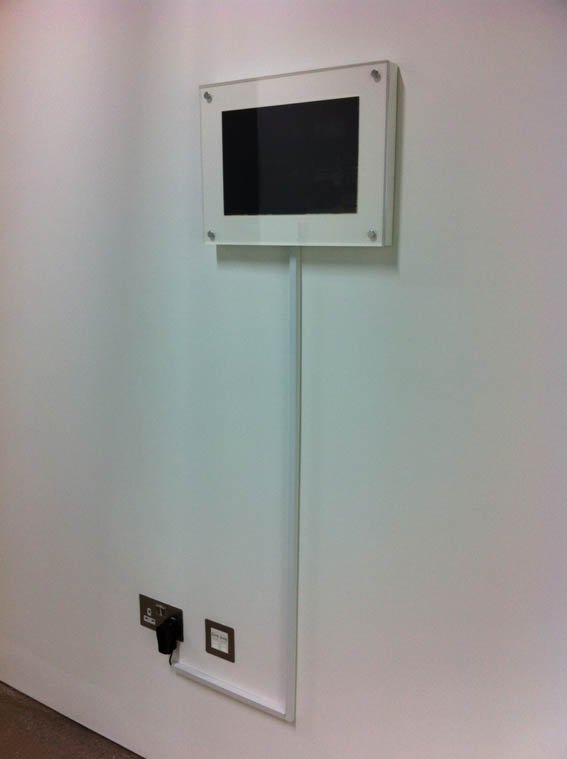


‘The Invisible Sky’, Four colour photo-etching with privacy filter, backlit, 19.5x29cm.
2012
To quote Robert Hurt, a visual imager working for NASA’s Jet Propulsion Laboratory, ‘Telescopes are our cybernetic eyes, extending our vision far beyond the narrow slice of visible light accessible to our biological eyes’.
We trust in technology to extend our vision and understanding into arenas in which we have no prior perceptual knowledge. The theory of empiricism puts emphasis on the acquisition of knowledge from primary experience and sensory perception. But when human experience is not physically possible to employ, how would the empiricist reflect upon the vision of the ‘cybernetic eye’?
We are reliant on scientists to give us pictures and information so that we may explore these other worlds from the safety and security of our computers. To quote Charles Baudelaire, ‘what one can see in the light of day is always less interesting than what happens behind a plane of glass’; as a society, we seem to have a fascination with things that are beyond our realm of perceptual understanding. The image of a faraway planet viewed behind a computer screen on the NASA website is, as Baudelaire may have claimed today, far more interesting than the immediate setting in which we are sat.
Through disrupting the machine and foregrounding the physical space in which these images are generated, I to draw attention to, and question notions of truth and belief in relation to machine made imagery. I am interested in the collision of different levels of technological image making and the juxtaposition between analogue methods of printmaking and high tech images.
This piece explores an interest in the levels of control exerted over the images we see of other planets and how the scientist, the machine, and the screen, can act as mediators to truth. I wanted to control how the viewer approached and regarded the work, whilst also reiterating the notion of the screen as a mediator. The privacy filter offers the viewer a visual conundrum in which their relationship to the image is disrupted by the screen.